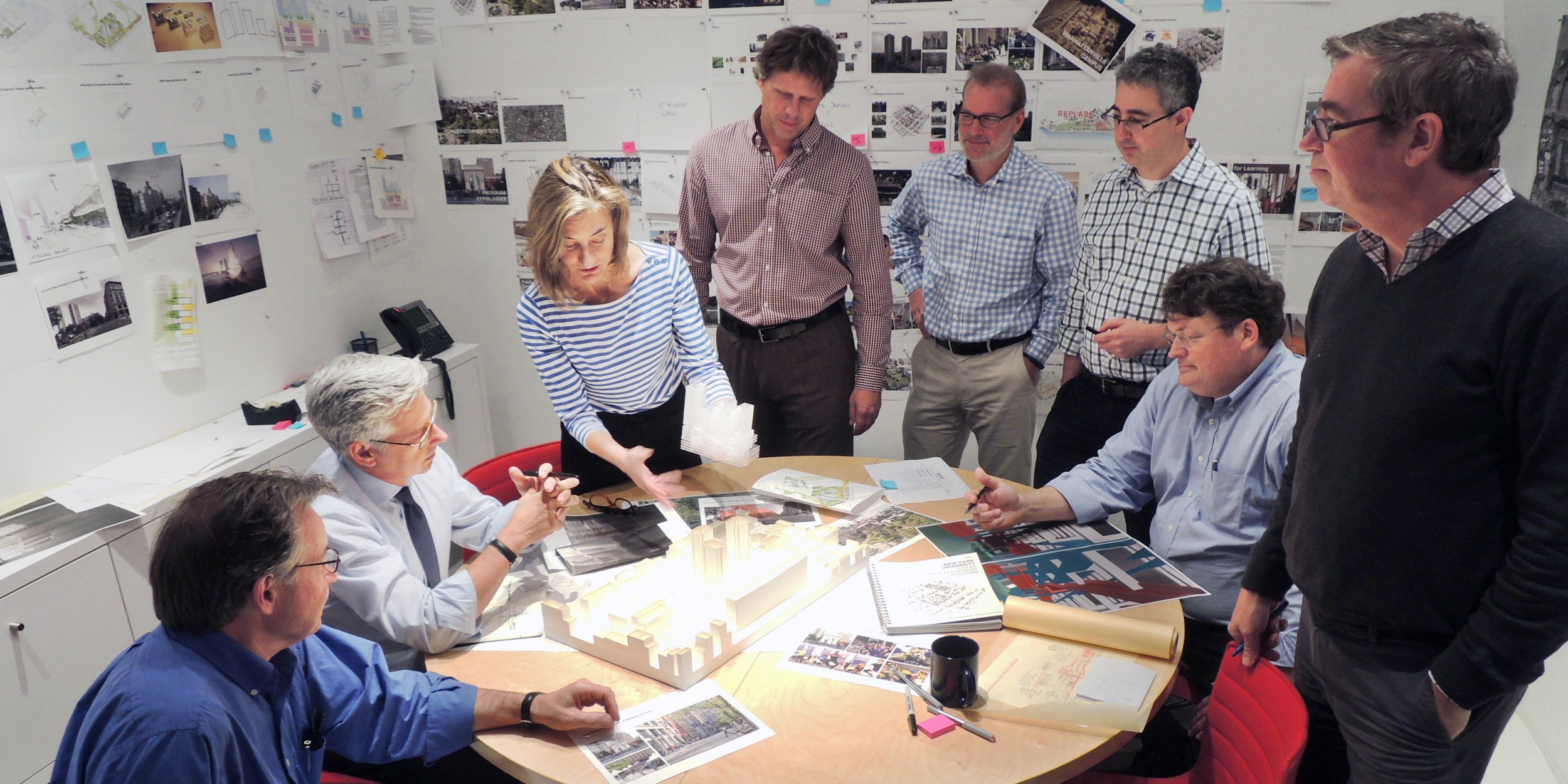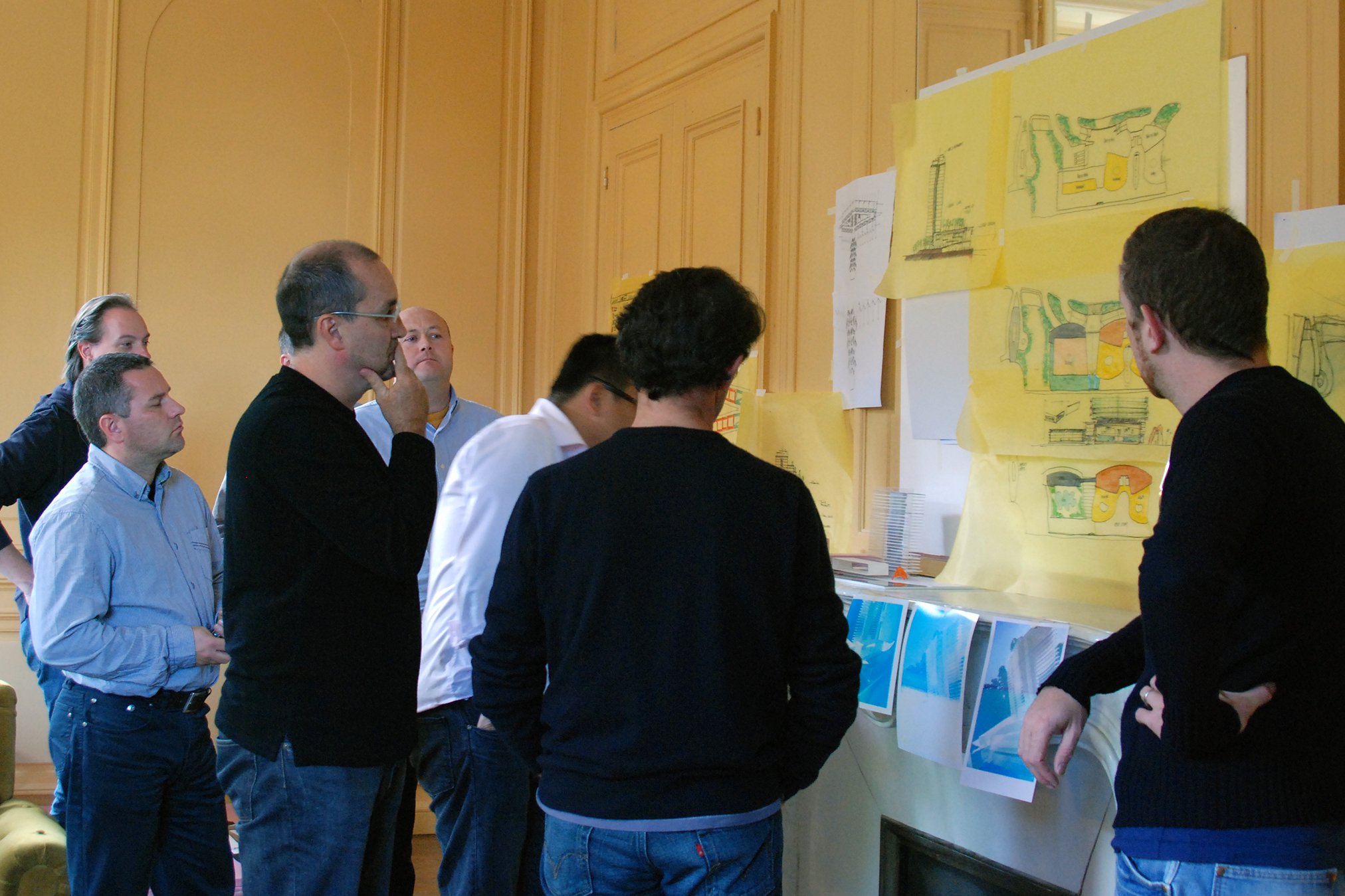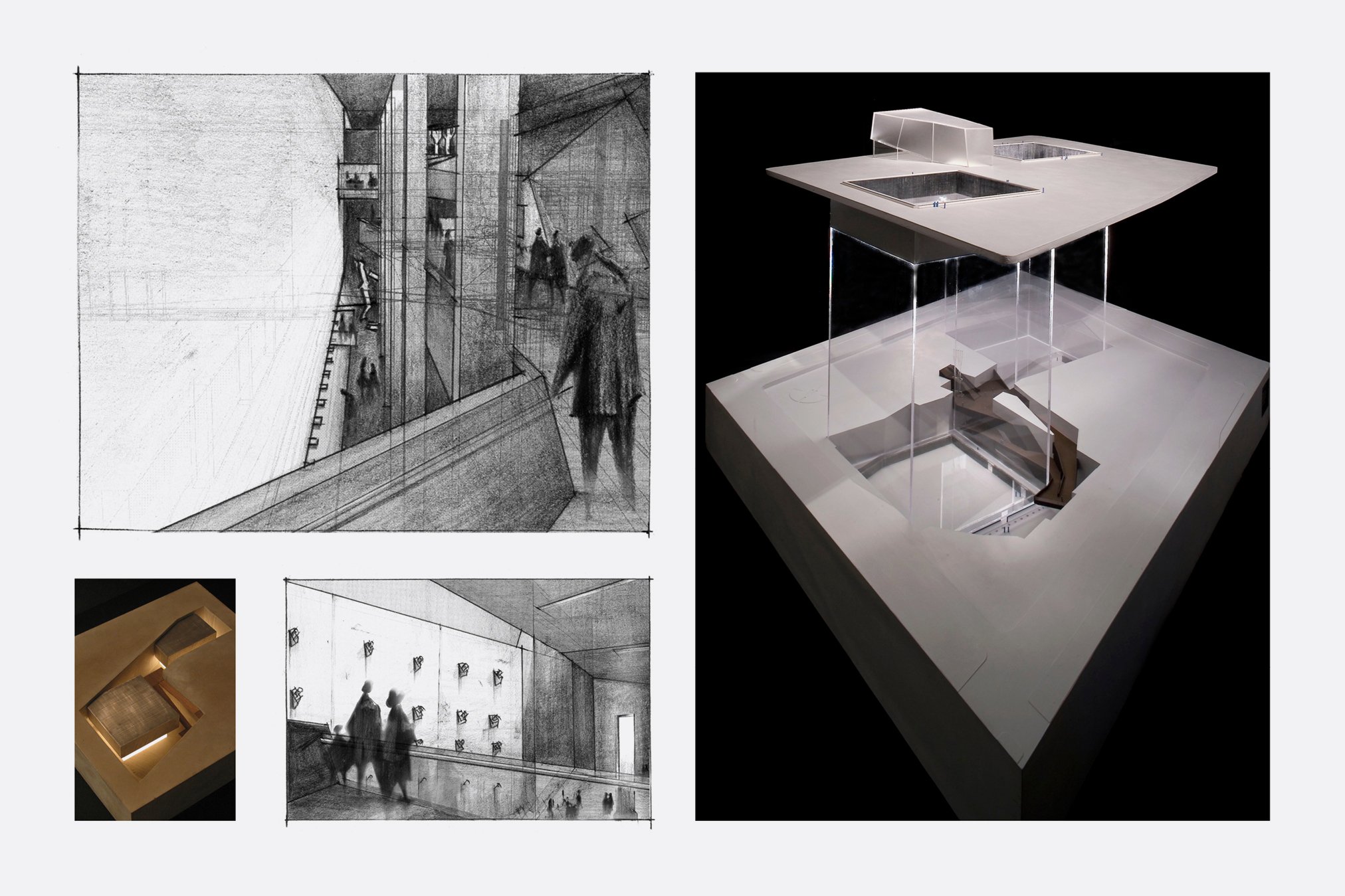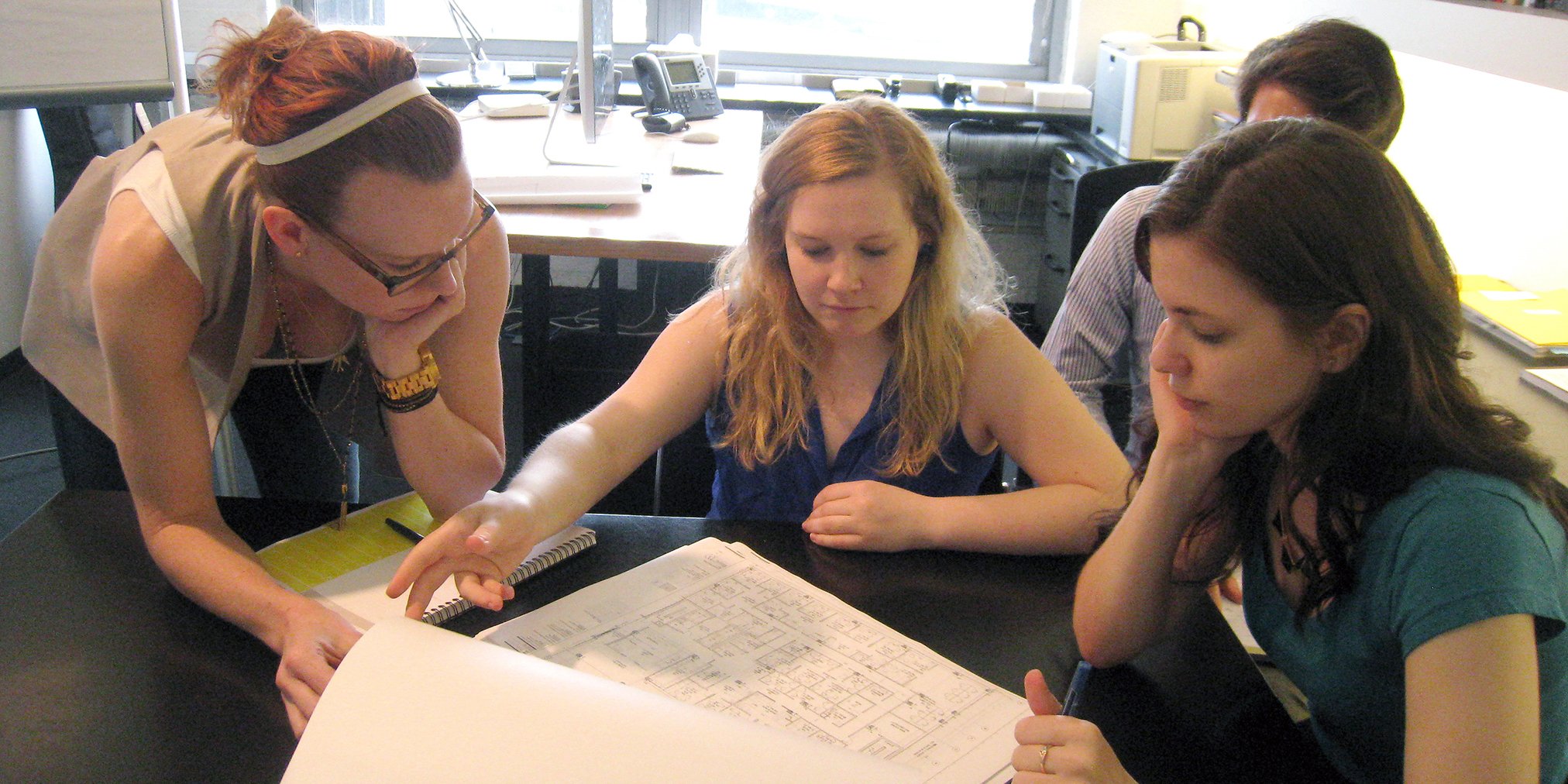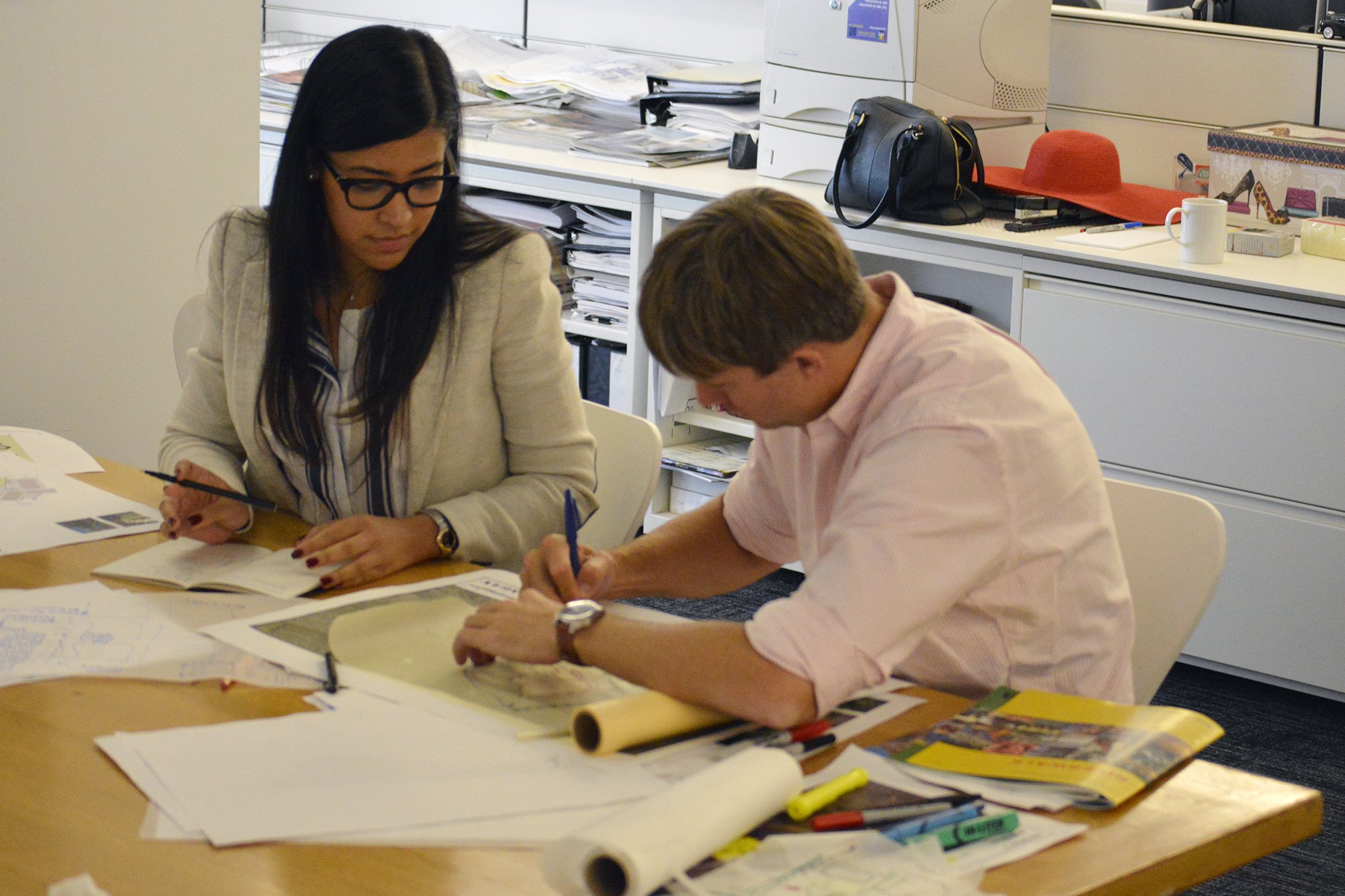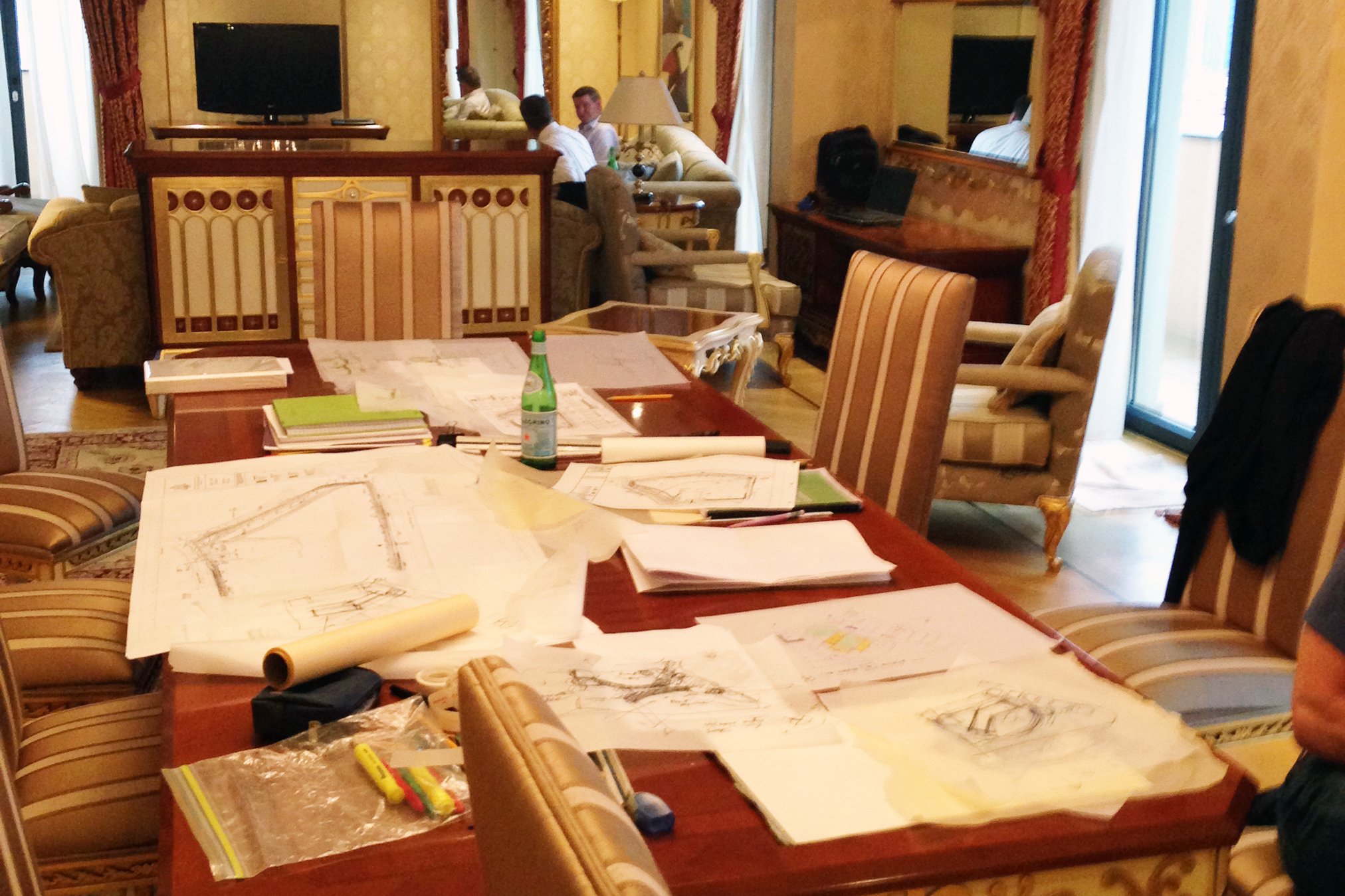COLLABORATION
We believe architecture is a collaborative art in which synergy and the open exchange of ideas give rise to the most fruitful and rewarding projects. We see every working relationship — whether with a client, sub-consultant, or associated architecture firm — as an opportunity to listen, learn, and grow professionally. Through our 70 years of practice, we have built an expansive network of collaborators across a diverse range of sectors with whom we enjoy working immensely. These include local, national, and international experts in sustainability, landscape, engineering, visual arts, music, performing arts, acoustics, interiors, graphic design, accessibility, outreach, and urbanism, among myriad other fields. We understand the many challenges our private and public clients face as they grow and reinvent themselves. Selecting the right firms and the right people to bring to the table is the first and most critical step in overcoming those challenges.
-
American Museum of Natural History New York, NY
Birmingham Civil Rights Institute, Birmingham, AL
Brooklyn Botanic Garden, Brooklyn, NY
District of Columbia Public Library, Washington, DC
The Federal Reserve Bank of New York, New York, NY
The Frick Collection, New York, NY
Ghana National Construction Corporation, Bolgatanga, Ghana
Governors Island, Governors Island, NY
Harvard Club of New York City, New York, NY
Human Rights in China, New York, NY
Irish Arts Center, New York, NY
The Library of Congress
Lincoln Center for the Performing Arts, New York, New York
Lower Manhattan Cultural Council, New York, NY
Malcolm X and Dr. Betty Shabazz Memorial and Education Center, New York, NY
Martin Luther King, Jr. Center for Nonviolent Social Change, Memorial & Library, Atlanta, GA
The Museum of Modern Art, New York, NY
The National Great Blacks in Wax Museum, Baltimore, MD
The National Mall Trust, Washington, DC
The National September 11 Memorial & Museum at the World Trade Center Foundation, New York, NY
New York Public Library, New York, NY
The Perelman Center for the Performing Arts at the World Trade Center New York, NY
The Port Authority of New York and New Jersey
Queens Borough Public Library, Queens, NY
Republic of South Africa, Embassy to the United States, Washington, DC
Smithsonian Institution, Washington, DC
U.S. Department of State, 1970 World Exposition, Osaka, Japan
U.S. Department of the Interior, National Park Service
U.S. Department of State, Bureau of Overseas Buildings Operations (OBO), Worldwide Locations
U.S. General Services Administration, New York, NY & Bowie, MD
Wildlife Conservation Society, Bronx Zoo, Bronx, NY -
Brown University, Providence, RI
Chesapeake College, Wye Mills, MD
The City University of New York, Baruch College, New York, NY
Central Connecticut State University, New Britain, CT
Columbia University, Morningside Heights Campus
Columbia University, Manhattanville Campus
Columbia University Medical Center, New York, New York
Cornell University, Ithaca, New York
Dillard University, New Orleans, LA
Harvard University Medical School, Boston, MA
Lincoln Center for the Performing Arts, Juilliard School of Music & The School of American Ballet New York, NY
Massachusetts Institute of Technology, Cambridge, MA
Mount Sinai School of Medicine, New York, NY
New York University, New York, NY
New York University, Polytechnic Institute, Brooklyn, NY
Northwestern University, Chicago & Evanston, IL
Princeton University, Princeton, NJ
Rensselaer Polytechnic Institute, Troy, NY
Rockefeller University, New York, NY
Rutgers University, New Brunswick & Newark, NJ
Sarah Lawrence College, Bronxville, NY
State University of New York, Binghampton, Buffalo & Amherst, NY
Stony Brook University, StonyBrook, NY
University of Connecticut, Storrs, CT
University of Maryland Biotechnology Institute, Baltimore, MD
University of Pennsylvania, Philadelphia, PA
University of Virginia, Charlottesville, VA
University of Wisconsin, Madison, WI
Vanderbilt Univ. & Medical Center, Nashville, TN
Yeshiva University, Cardozo Law School, New York, NY
Eagle Academy for Young Men, Co-sponsored by the NYC SCA and 100 Black Men of New York, Inc., Bronx, NY
Harlem Children’s Zone Community Center & Charter School, New York, NY
New Haven Public Schools, New Haven, CT
NYC School Construction Authority, New York, NY
Speyer Legacy School, New York, NY -
ARCO Chemical Company, Newton Square, PA
Brown University, Providence, RI
Columbia University & Columbia University Medical Center, New York, NY
Cornell University & Cornell University Medical School, Ithaca, NY
Deep Underground Science and Engineering Laboratory (DUSEL), Homestake, SD
Estée Lauder Inc., Various Locations
Harvard Medical School, Boston, MA
L’Oréal, Various Locations
Memorial Sloan-Kettering Cancer Center, New York, NY
Mount Sinai School of Medicine, New York, NY
New York Structural Biology Center Cryogenic Electron Microscopy Facility, New York, NY
New York University Polytechnic Institute, Brooklyn, NY
Northwestern University, Chicago & Evanston, IL
Princeton University, Princeton, NJ
Procter & Gamble Gillette, Irapuato, Mexico
Rockefeller University, New York, NY
Stony Brook University, Stony Brook, NY
University of Connecticut, Storrs, CT
University of Maryland Biotechnology Institute, Baltimore, MD
University of Virginia Health Sciences Division, Charlottesville, VA
University of Wisconsin Health Sciences Division, Madison, WI
Vanderbilt University Medical Center, Nashville, TN
Valeo Systems, Various Locations Worldwide
Yale University, Yale/New Haven Hospital, New Haven, CT -
The Durst Organization New York, NY
Lincoln Center for the Performing Arts, New York, NY
The Olnick Organization, New York, NY
RAL, New York, NY
The Related Companies, New York, NY
Solow Residential, New York, NY
Strivers Gardens Realty, LLC, New York, NY
Zeckendorf Development, New York, NY -
Beth Israel Medical Center, New York, NY
Bronx-Lebanon Hospital Center
Hunt’s Point Primary Care Center, Bronx, NY
Brookdale University Hospital Medical Center, Brooklyn, NY
Columbia University Medical Center, New York-Presbyterian Hospital
Morgan Stanley Children’s Hospital of New York, New York, NY
Cornell University Medical College, Ithaca, NY
Harvard University Medical School, Boston, MA
Hospital for Special Surgery New York, NY
Irving Center for Clinical Research, New York, NY
Memorial Sloan-Kettering Cancer Center, New York, NY
Mount Sinai Medical Center, New York, NY
Mount Sinai Queens, Queens, NY
Northwestern University Medical School, Chicago, IL
Queens Hospital Center, Jamaica, NY
St. Barnabas Hospital, Bronx, NY
St. Luke’s-Roosevelt Hospital Center, New York, NY
St. Vincent’s Hospital & Medical Center, New York, NY
University of Virginia Health Sciences Center, Charlottesville, VA
Vanderbilt University Medical Center, Nashville, TN
Yale University, Yale/New Haven Hospital, New Haven, CT
Many of our most memorable and successful recent projects — including the new Paulson Center at NYU (co-designed with KieranTimberlake), the United States Embassy in Mexico City (co-designed with Tod Williams Billie Tsien Architect, and the National Museum of African American History and Culture (as part of the Freelon Adjaye Bond team) — are the product of a multidisciplinary process that is collaborative and engaging. We frequently work with other design firms and believe that if structured properly, collaboration can strengthen the design of a project. Our collaborations have been in various roles that range from being lead Design Architect, to part of a multi-member design team, to founding member of a joint venture partnership, to serving in the role of Executive Architect.
Conventional wisdom tends to suggest that a successful collaboration involves a strong design firm working together with a strong production firm serving as the Executive Architect, typically with control passing over at the end of Design Development. However, having served more often as the Design Architect, we believe that an integrated team approach is the most successful design strategy. With clearly defined roles, both the Design Architect and the Executive Architect must work closely together in all aspects of the design process to insure a cohesive and complete understanding of the problem and the solution. Both firms’ process should rely on understanding the client, how the client works, and the client’s vision for the project. We believe the most successful buildings are an outgrowth of a dialogue that constantly challenges the assumptions of both the Owner and Architect to create a building that is particular to its physical circumstance, its time, and the way the client intends to use it.
-
-
As Architect of Record / Executive Architect
National September 11 Memorial Pavilion (with Handel Architects & Peter Walker Partners
Rensselaer Polytechnic Institute Experimental Media Performing Arts Center (with Nicholas Grimshaw Architects )
Columbia University Jerome L. Greene Science Center (with Renzo Piano Building Workshop)
Columbia University Lenfest Center for the Arts (with Renzo Piano Building Workshop)
Columbia University Northwest Corner Science Building (with Rafael Moneo)
Princeton University Neuroscience & Psychology Complex (with Rafael Moneo)
Ronald O. Perelman Performing Arts Center at the World Trade Center (with REX Architecture)
American Museum of Natural History Richard Gilder Center for Science, Education, and Innovation (with Studio Gang)
Joint Ventures
New York University 181 Mercer Street (with KieranTimberlake)
U.S. Department of State Bureau of Overseas Building Operations Mexico City New U.S. Embassy Compound (with Tod Williams Billie Tsien Architects)
Smithsonian Institute, National Museum of African American History & Culture (as Freelon Adjaye Bond with the Phil Freelon Group, Adjaye Associates, & Smithgroup)

